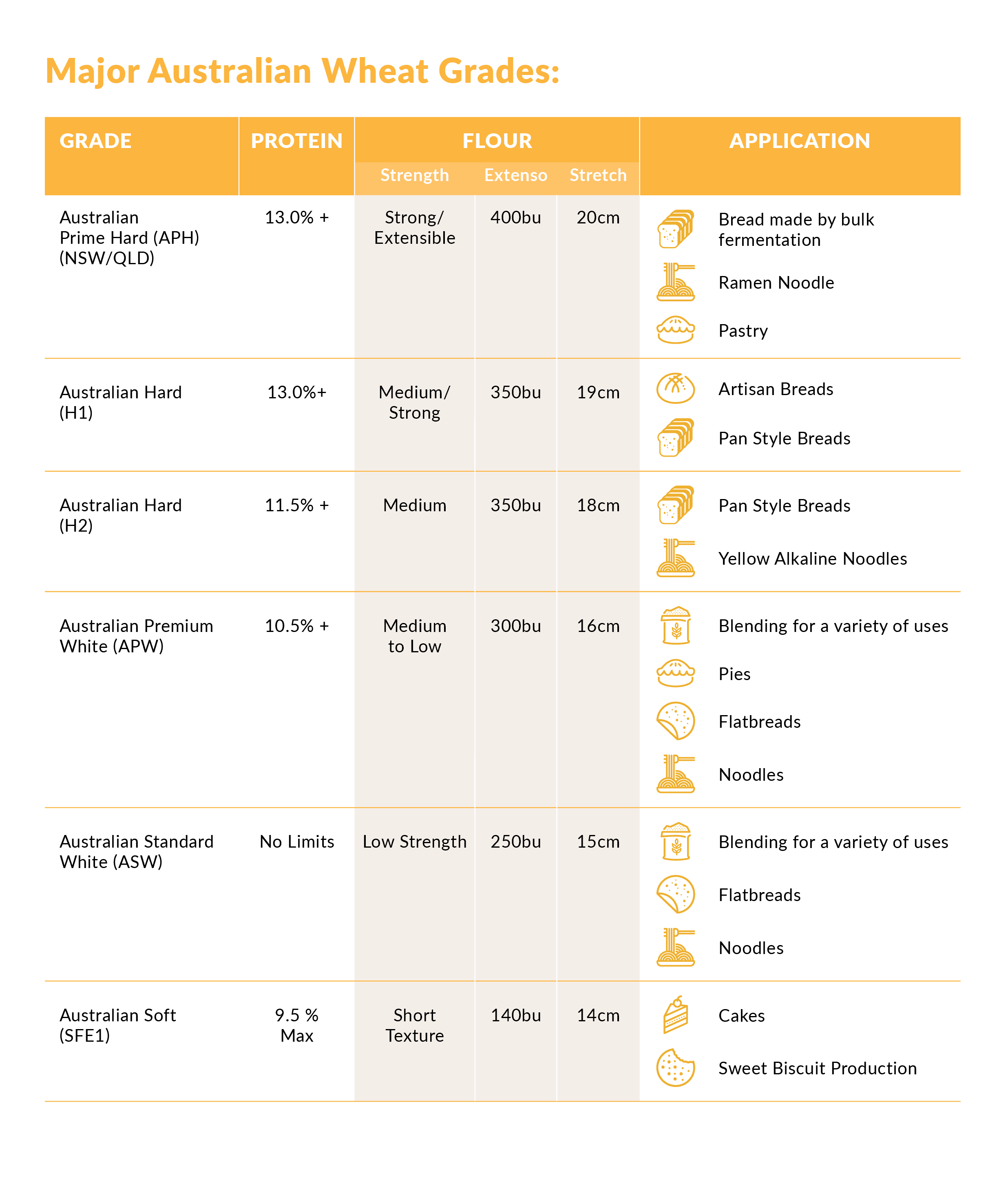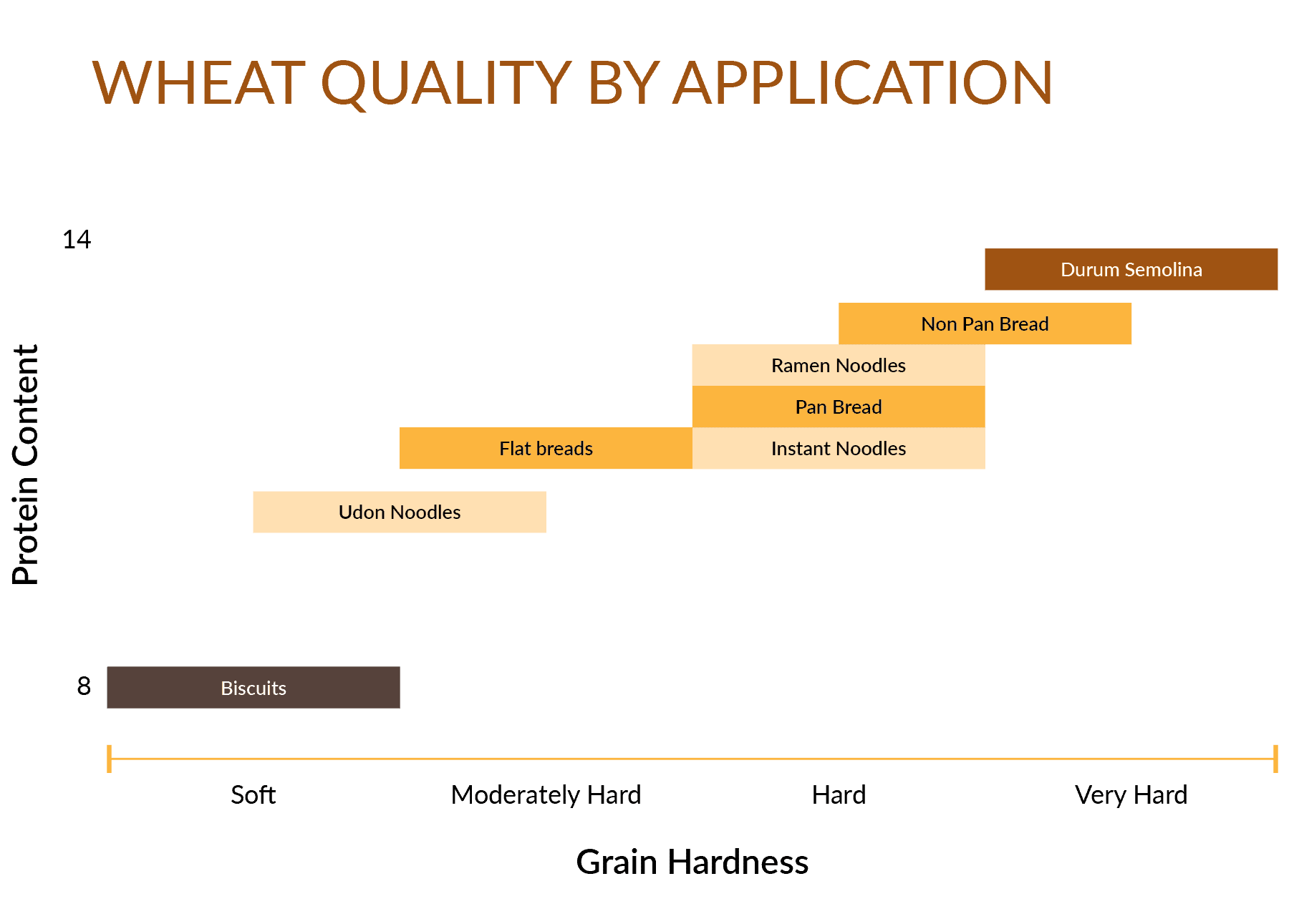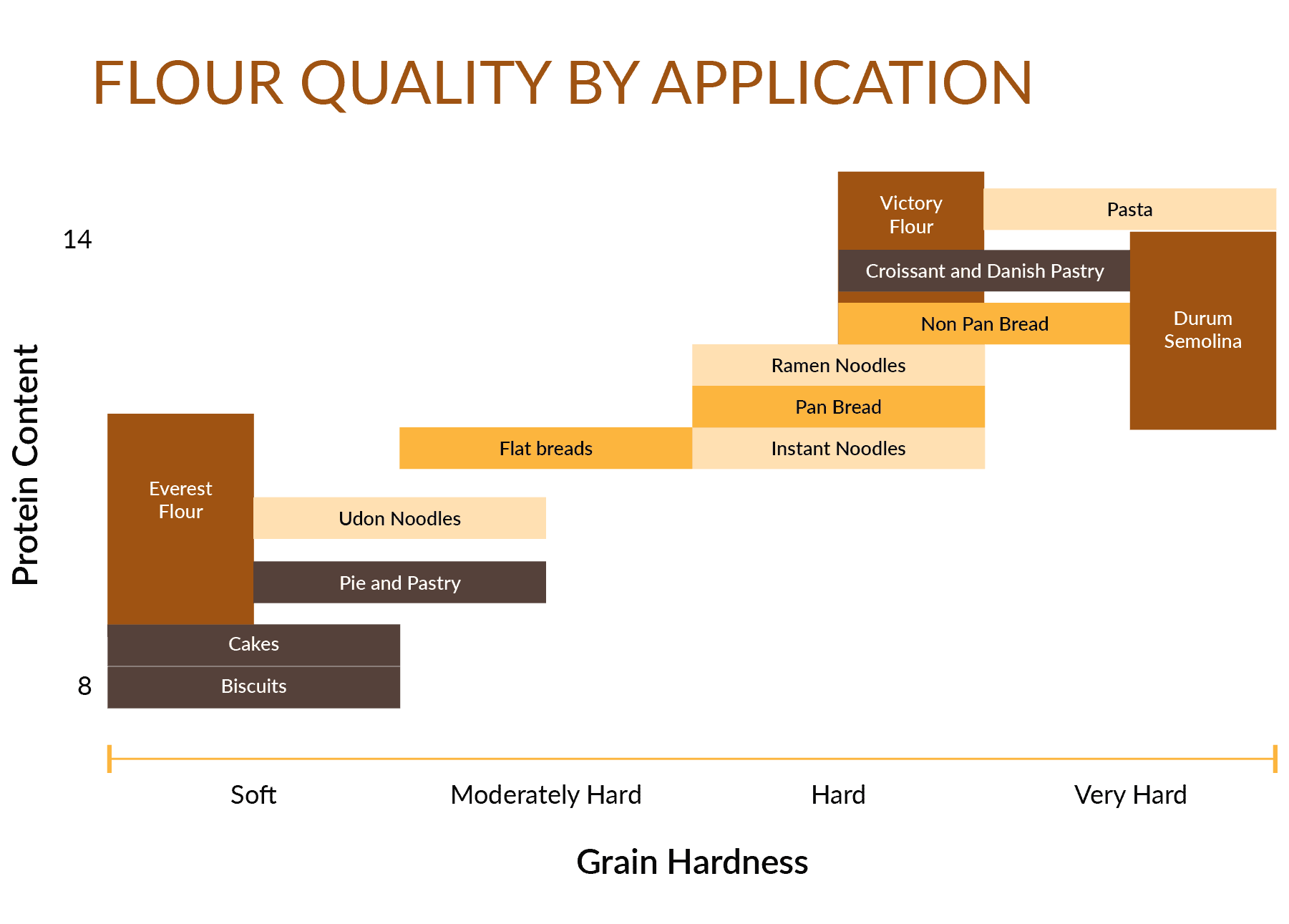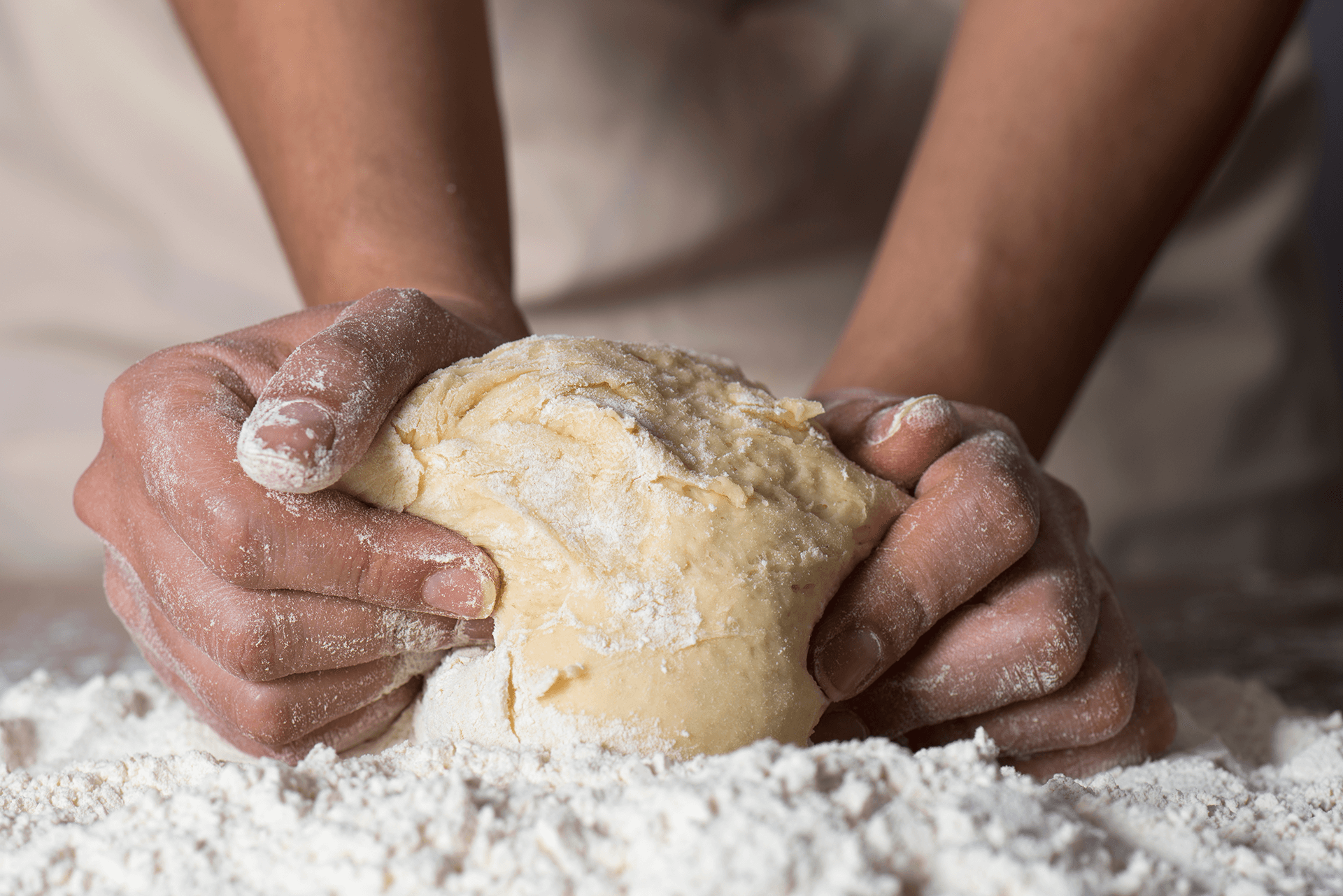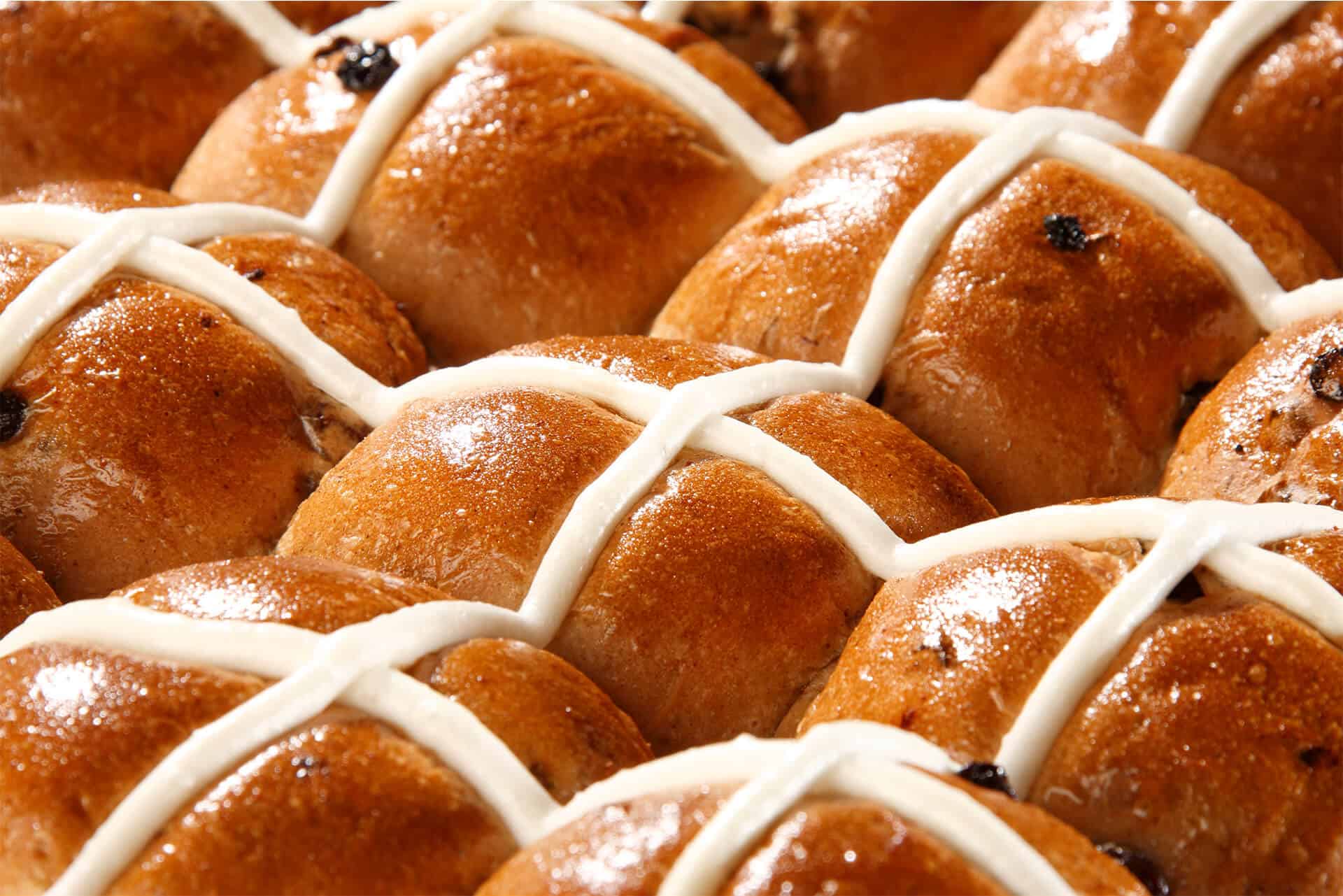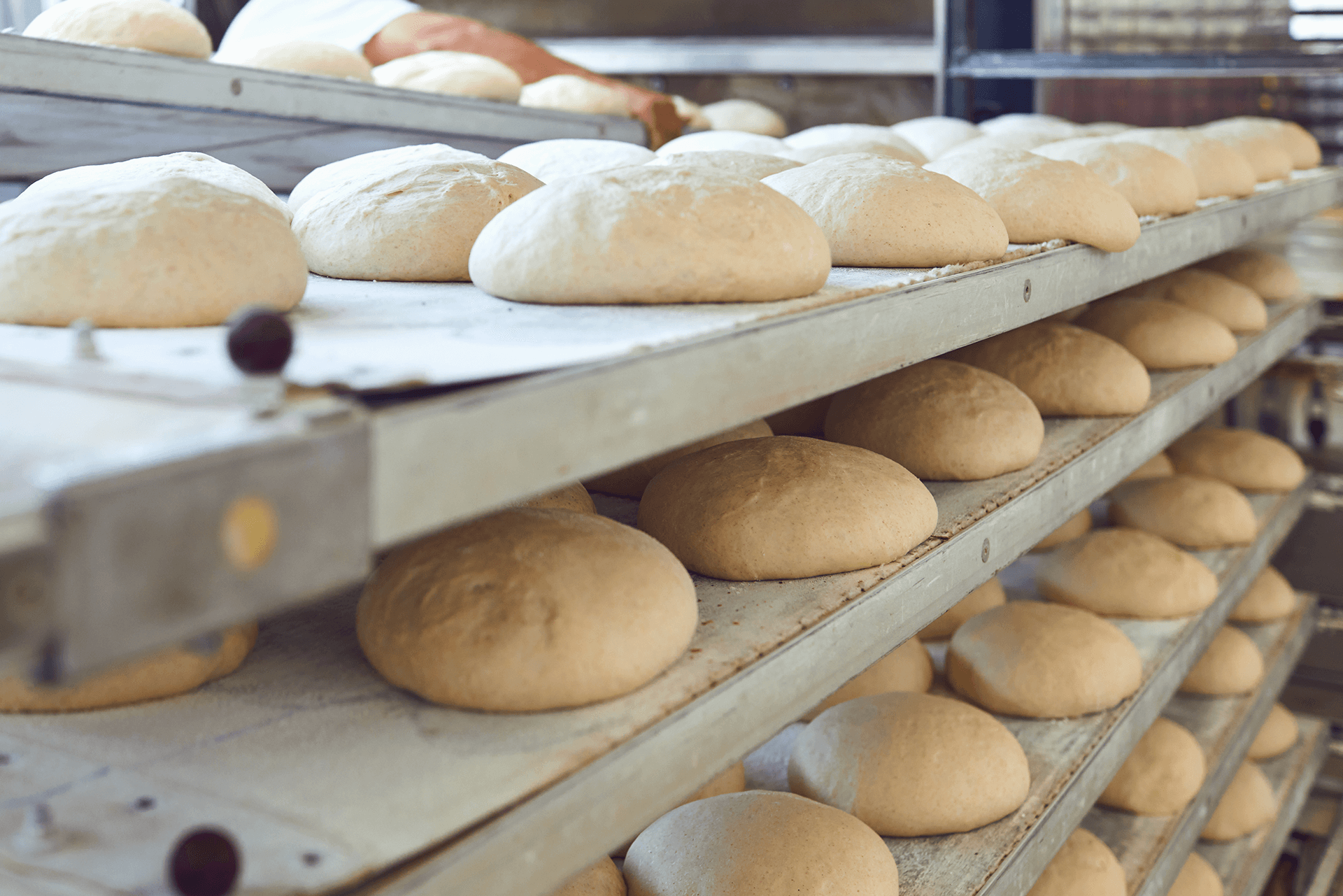Wheat is a natural raw ingredient which is variable in nature. The Milling of Bread Flour is the physical grinding of wheat into flour and consists of two main components – Gluten and Starch.
Gluten is a unique protein found in Wheat which makes it suitable for bread making. The Protein content in Bread Flour has a greater influence on overall processing quality than any other single factor. Once hydrated and developed, the gluten in the dough forms a matrix which retains the gas produced by the yeast and forms the structure of the loaf.
The second main component of Bread Flour is Starch – together with added water, starch provides the bulk of the loaf.
There are four basic factors which affect bread flour quality;
1. Milling quality (yield / colour)
2. Grain hardness
3. Protein content
4. Dough strength
There is more to better baking quality than specifications, and the real art of flour milling is blending the right combination of wheats to achieve a consistent Bread Flour. The secret is selecting the right wheat varieties. Although wheat varieties differ in their capacity to accumulate protein, the environment is the major determinant of the protein level of wheat and depends on a number of factors including; Variety, Locality, Environment and Soil Fertility.
How do we manage Bread Flour quality at the mill?
Through a process known as Best Value Gristing (BVG). Each year as the wheat crop is harvested (August – January), the batch of new seasons wheat from different buying locations are baked and tested to identify the preferred regions. The wheat varieties that perform best are selected and milled to deliver optimal baking quality and value. This process helps to level out the quality variations seen from season-to-season and deliver consistent product to our customers.
Wheat is the largest grain crop grown in Australia averaging 16 million tonnes annually and is grown across each state. Wheat is graded and grouped into a number of classes;
Classes of Australian Wheat
Australian Prime Hard
Prime Hard has excellent milling quality and targets a minimum protein level of 13%.
Australian Hard
Australian Hard also has excellent milling properties at a minimum protein level of 11.5%.
Australian Premium White
This wheat also exhibits excellent milling properties and is a selection of hard grained varieties with a guaranteed minimum protein of 10%.
Australian Standard White (ASW)
Protein segregation has been introduced for ASW but each delivery must be of an approved or recommended variety. Australian Standard White wheat therefore covers a wide range of protein content, hardness and inherent strength.
Australian Soft
This class consists of typical soft biscuit wheat varieties. The low protein and weak extensible dough properties make the flour milled from this wheat very suitable for biscuit and other soft wheat end uses.
Protein Levels
- Victory flour is our highest protein flour that ranges between 11.5% – 12.8%.
- Soft Biscuit Flour is our lowest protein flour with the range of 7.5 – 10.
- Biscuit flour 7.5 – 10% protein
- Pastry Flour 10.4 – 11.2%
